Themed collection Organic Collection: from theory to synthesis, from molecules to materials, catalysis and beyond

Recent advances in asymmetric organocatalytic conjugate addition of arenes and hetero-arenes
This review describes the recent development in organocatalytic conjugate addition of arenes and hetero-arenes to unsaturated Michael acceptors.

RSC Adv., 2012,2, 6117-6134
https://doi.org/10.1039/C2RA20544K
Recent advances of ionic liquids in separation science and mass spectrometry
Advances of ionic liquids in chromatography, extractions, and mass spectrometry are reviewed.

RSC Adv., 2012,2, 5470-5484
https://doi.org/10.1039/C2RA20142A
Recent advances in steroidal supramolecular gels
The most recent advances in the field of steroidal supramolecular gels are reviewed. Moreover, the potential applications of the gels are highlighted.
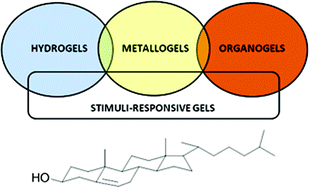
RSC Adv., 2012,2, 4985-5007
https://doi.org/10.1039/C2RA01343F
Recent developments in solvent-free multicomponent reactions: a perfect synergy for eco-compatible organic synthesis
This review reports the development of multicomponent reactions over the last 10 years.

RSC Adv., 2012,2, 4547-4592
https://doi.org/10.1039/C2RA01056A
Recent developments in the molecular recognition of carbohydrates by artificial receptors
This review covers representative examples of artificial carbohydrate receptors, which use noncovalent interactions for carbohydrate binding, with a focus on developments in receptor systems over the last two years.
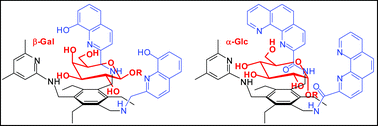
RSC Adv., 2012,2, 2630-2642
https://doi.org/10.1039/C2RA01138G
Catalytic versus stoichiometric dehydrocoupling using main group metals
The balance between stoichiometric (oxidative) and catalytic (dehydrogenic) coupling of element-H bonds is fundamentally reliant on the redox stability of the main group dehydrocoupling system employed, as can be concluded from recent developments in the area.
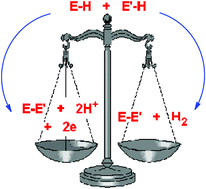
RSC Adv., 2012,2, 2191-2199
https://doi.org/10.1039/C2RA00882C
Bioelectrochemical systems (BES ) for sustainable energy production and product recovery from organic wastes and industrial wastewaters
Bioelectrochemical systems enable production of energy from wastewater and biowaste, and find application in wastewater treatment, bioremediation and microbial electrosynthesis.
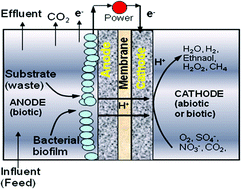
RSC Adv., 2012,2, 1248-1263
https://doi.org/10.1039/C1RA00839K
Cucurbituril chemistry: a tale of supramolecular success
The Cucurbit[n]uril family of macrocycles has been generating some tremendous interest in the supramolecular community, because of the exceptional recognition properties of its members in aqueous medium. This review highlights the advances of the past six years in this blossoming field.
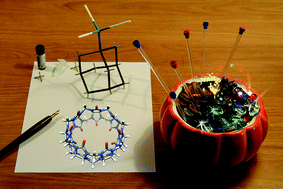
RSC Adv., 2012,2, 1213-1247
https://doi.org/10.1039/C1RA00768H
Aromatic hydroxyl group—a hydrogen bonding activator in bifunctional asymmetric organocatalysis
Asymmetric transformations catalyzed by bifunctional organocatalysts bearing an aromatic hydroxyl group and tertiary amine/phosphine moiety have been reviewed.

RSC Adv., 2012,2, 737-758
https://doi.org/10.1039/C1RA00872B
Targeted drugs by olefin metathesis : piperidine -based iminosugars
The potential of olefin metathesis reactions (RCM, RCEYM, CM) as efficient new strategy for the synthesis of piperidine-based iminosugars is examined. The title compounds are potent glycosidase inhibitors for treatment of viral and metabolic diseases.

RSC Adv., 2012,2, 719-736
https://doi.org/10.1039/C1RA00910A
Methods for SAR visualization
Shown are corresponding SAR regions in alternative activity landscape representations.
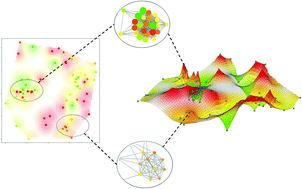
RSC Adv., 2012,2, 369-378
https://doi.org/10.1039/C1RA00924A
Enantioselective organocatalytic α-heterofunctionalization of active methines
This review illustrates recent progress in the organocatalytic enantioselective α-amination, α-hydroxylation, α-sulfenylation and α-halogenation reactions of active methines mediated by mono-, bi-, multi-functional organocatalysts, phosphoric acids and phase transfer catalysts.

RSC Adv., 2012,2, 385-397
https://doi.org/10.1039/C1RA00612F
Homogeneous and heterogeneous catalysts for multicomponent reactions
A number of multicomponent reactions, homogeneous and heterogeneous acid and base catalyzed, are overviewed.

RSC Adv., 2012,2, 16-58
https://doi.org/10.1039/C1RA00807B
Iron -catalysed reduction of carbonyls and olefins
Iron catalysis has emerged as a powerful tool for synthetic chemistry. Here, recent advances in the iron-catalysed reduction of carbonyl compounds and olefins are reviewed and discussed.
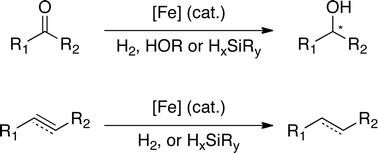
RSC Adv., 2011,1, 1435-1445
https://doi.org/10.1039/C1RA00476J
Graphene -based photocatalytic composites
The use of graphene to enhance the efficiency of photocatalysis has attracted much attention. This review is focused on the recent significant advances in the fabrication and applications of graphene-based hybrid photocatalysts.

RSC Adv., 2011,1, 1426-1434
https://doi.org/10.1039/C1RA00382H
A highly selective G-quadruplex-based luminescent switch-on probe for the detection of nanomolar strontium(II) ions in sea water
A G-quadruplex-selective luminescent iridium(III) switch-on probe has been developed for the selective detection of Sr2+ ions in buffered solutions and sea water.

RSC Adv., 2012,2, 8273-8276
https://doi.org/10.1039/C2RA21119J
A facile synthesis of cysteine–ferrite magnetic nanoparticles for application in multicomponent reactions—a sustainable protocol
Cysteine was easily immobilized on a Fe3O4 surface and the catalyst successfully applied for the synthesis of β-amino carbonyls and hydroquinoline compounds.
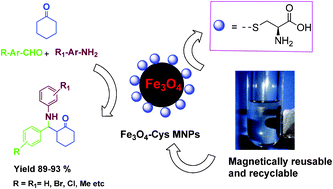
RSC Adv., 2012,2, 6144-6149
https://doi.org/10.1039/C2RA20955A
Room temperature synthesis of isoquino[2,1-a][3,1]oxazine and isoquino[2,1-a]pyrimidine derivatives via visible light photoredox catalysis
A room temperature construction of isoquino[2,1-a][3,1]oxazine and isoquino[2,1-a]pyrimidine frameworks has been realized by means of visible light photocatalytic reactions.
![Graphical abstract: Room temperature synthesis of isoquino[2,1-a][3,1]oxazine and isoquino[2,1-a]pyrimidine derivatives via visible light photoredox catalysis](/en/Image/Get?imageInfo.ImageType=GA&imageInfo.ImageIdentifier.ManuscriptID=C2RA20403G&imageInfo.ImageIdentifier.Year=2012)
RSC Adv., 2012,2, 4065-4068
https://doi.org/10.1039/C2RA20403G
Homochiral 1D-helical coordination polymers from achiral cucurbit[5]uril: hydroquinone -induced spontaneous resolution
A pair of enantiomorphs of cucurbit[5]uril with Dy3+ was obtained by total spontaneous resolution upon crystallization in the presence of achiral hydroquinone.
![Graphical abstract: Homochiral 1D-helical coordination polymers from achiral cucurbit[5]uril: hydroquinone-induced spontaneous resolution](/en/Image/Get?imageInfo.ImageType=GA&imageInfo.ImageIdentifier.ManuscriptID=C2RA01132H&imageInfo.ImageIdentifier.Year=2012)
RSC Adv., 2012,2, 3217-3220
https://doi.org/10.1039/C2RA01132H
Significant improvement in the conversion efficiency of black-dye-based dye -sensitized solar cells by cosensitization with organic dye
The light-to-electrical energy conversion efficiency of a black-dye-sensitized solar cell was improved by cosensitization with organic dyes, NKX-2553 or D131, and further enhanced by employing deoxycholic acid as a coadsorbent.
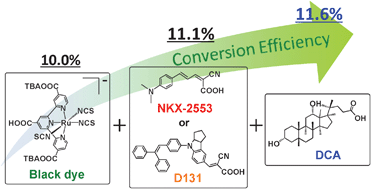
RSC Adv., 2012,2, 3198-3200
https://doi.org/10.1039/C2RA01257J
Palladium -catalyzed heck-type arylation of acrylate with diaryliodonium salts
Highly effective palladium-catalyzed Heck-type arylation of acrylate with diaryliodonium salts has been developed, giving cinnamate in high yields without ligand and base.

RSC Adv., 2012,2, 3207-3209
https://doi.org/10.1039/C2RA20165H
Organic dyes containing fluorene -substituted indoline core for zinc oxide dye-sensitized solar cell
A novel idoline dye, having dimethylfluorene-substituted indoline donor and dicyanovinylidene-introduced rhodanine acceptor (DN350), gave much higher efficiency than D205 due to bathochromic absorption band and prevention of aggregates formation.

RSC Adv., 2012,2, 2721-2724
https://doi.org/10.1039/C2RA01358D
Flower-like CuO microspheres with enhanced catalytic performance for dimethyldichlorosilane synthesis
Flower-like CuO microspheres show better catalytic performance in the Rochow reaction for dimethyldichlorosilane synthesis than commercial dense CuO microparticles.

RSC Adv., 2012,2, 2254-2256
https://doi.org/10.1039/C2RA00923D
Photo-hydrogen production by Rhodopseudomonas faecalis RLD-53 immobilized on the surface of modified activated carbon fibers
The surface morphology and chemistry changes of activated carbon fibers (ACFs) caused by HNO3 oxidation and steam explosion greatly increased the immobilization capacity of the ACFs to attach more bacteria for enhancing hydrogen production.

RSC Adv., 2012,2, 2225-2228
https://doi.org/10.1039/C2RA01075E
Novel choline -chloride -based deep-eutectic-solvents with renewable hydrogen bond donors: levulinic acid and sugar -based polyols
Solutions from Nature. Biodegradable and versatile chiral new deep eutectic solvents are produced by combining choline chloride with different hydrogen bond donors

RSC Adv., 2012,2, 421-425
https://doi.org/10.1039/C1RA00630D
Controlled Knoevenagel reactions of methyl groups of 1,3,5,7-tetramethyl BODIPY dyes for unique BODIPY dyes
Formyl groups at 6- and 2,6-positions initiate Knoevenagel reactions of the methyl groups at the 7, and 1,7-positions of 1,3,5,7-tetramethyl BODIPY dyes with aromatic aldehydes for making novel dyes for sensing or imaging applications.
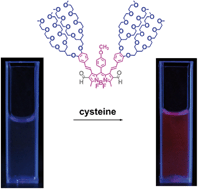
RSC Adv., 2012,2, 404-407
https://doi.org/10.1039/C1RA00678A
Chelation-assisted palladium -catalyzed high regioselective heck diarylation reaction of 9-allyl-9H-purine : synthesis of 9-(3,3-diaryl-allyl)-9H-purines
A Pd-catalyzed highly regioselective diarylation of 9-allyl-9H-purine via chelation-assisted Heck reaction is developed. There were two different types of β-H in the allyl substrate, while the two aryl groups are exclusively introduced to the terminal of the olefins.

RSC Adv., 2011,1, 961-963
https://doi.org/10.1039/C1RA00410G
Organocatalytic asymmetric Henry reaction of isatins: Highly enantioselective synthesis of 3-hydroxy-2-oxindoles
Organocatalytic asymmetric Henry reaction of isatins with nitromethane has been achieved with the use of a C6′-OH cinchona alkaloid catalyst, affording 3-substituted 3-hydroxy-oxindoles in excellent yields and high enantioselectivities.

RSC Adv., 2011,1, 389-392
https://doi.org/10.1039/C1RA00477H
A novel application of porphyrin nanoparticles as an effective fluorescent assay platform for nucleic acid detection
Highly sensitive and selective DNA detection using 2,3,7,8,12,13,17,18-octaethyl-21H,23H-porphine iron(III) chloride nanoparticles (FePNPs) as a novel fluorescent assay platform.
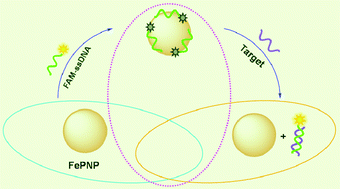
RSC Adv., 2011,1, 36-39
https://doi.org/10.1039/C1RA00026H
Thienyl -substituted BODIPYs with strong visible light-absorption and long-lived triplet excited states as organic triplet sensitizers for triplet–triplet annihilation upconversion
BODIPYs with intense visible-light absorption and long-lived T1 excited states were prepared as organic triplet photosensitizers for triplet–triplet annihilation upconversion.
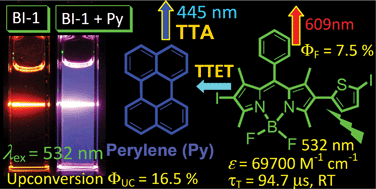
RSC Adv., 2012,2, 3942-3953
https://doi.org/10.1039/C2RA01064J
Iodine catalyzed four-component reaction: a straightforward one-pot synthesis of functionalized pyrroles under metal-free conditions
Functionalized pyrroles are synthesized for the first time via I2-mediated MCR under metal free conditions.

RSC Adv., 2012,2, 3387-3395
https://doi.org/10.1039/C2RA00982J
Reversible polymerization of novel monomers bearing furan and plant oil moieties: a double click exploitation of renewable resources
Two click chemistry approaches were applied to macromolecular syntheses, namely a thiol-ene coupling to convert unsaturated plant oil derivatives into bifunctional monomers, and their Diels–Alder polycondensation to obtain thermoreversible materials.
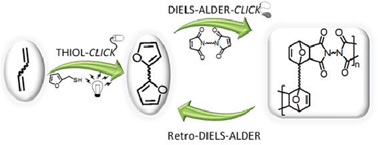
RSC Adv., 2012,2, 2966-2974
https://doi.org/10.1039/C2RA20053H
Multi-carbazole derivatives: new dyes for highly efficient dye -sensitized solar cells
Three new multi-carbazole derivatives (2C–4C) with a twisted and zigzag-shape structure were designed, synthesized and used as sensitizers for dye-sensitized solar cells (DSSCs).
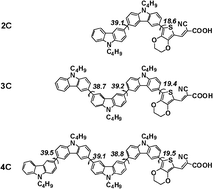
RSC Adv., 2012,2, 2427-2432
https://doi.org/10.1039/C2RA01002J
Synthesis, properties and highly selective mitochondria staining with novel, stable and superior benzothiadiazole fluorescent probes
Impressive selective cellular mitochondria staining of different cells line was achieved with novel fluorescent 2,1,3-benzothiadiazole derivatives.

RSC Adv., 2012,2, 1524-1532
https://doi.org/10.1039/C1RA00701G
Understanding the origin of the asynchronicity in bond-formation in polar cycloaddition reactions. A DFT study of the 1,3-dipolar cycloaddition reaction of carbonyl ylides with 1,2-benzoquinones
In polar processes the bond-formation begins at the center with the highest spin density achieved through the charge transfer process.
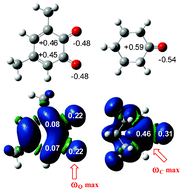
RSC Adv., 2012,2, 1334-1342
https://doi.org/10.1039/C1RA00717C
De novo design of small molecule inhibitors targeting the LEDGF /p75-HIV integrase interaction
The inhibitor 3-(1H-indol-3-ylthio)-N-(2-isopopoxy-6-methoxypyridin-3-yl)benzamide (CAB1) and its derivatives (CAB2-13) inhibit the LEDGF/p75-IN protein–protein interaction with moderate potency. These molecules are the first examples of SMPPIIs targeting LEDGF/p75 and not IN.
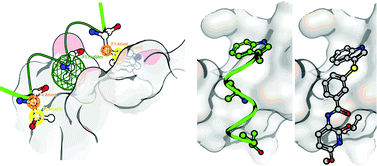
RSC Adv., 2012,2, 974-984
https://doi.org/10.1039/C1RA00582K
Bioaugmentation of an electrochemically active strain to enhance the electron discharge of mixed culture: process evaluation through electro-kinetic analysis
Shewanella haliotis ATCC 49138 was evaluated as a biocatalyst for bioaugmentation of anodic native microflora to enhance the electrogenic activity of microbial fuel cell (MFC).

RSC Adv., 2012,2, 677-688
https://doi.org/10.1039/C1RA00540E
Glutathione : mechanism and kinetics of its non-enzymatic defense action against free radicals
Glutathione is an excellent chemical protector against a wide variety of free radicals, reacting exclusively by hydrogen transfer.
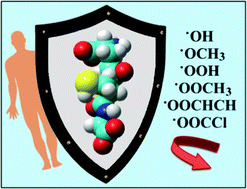
RSC Adv., 2011,1, 1763-1771
https://doi.org/10.1039/C1RA00474C
Urea as an organic solvent and reagent for the addition/cyclization/fragmentation cascades leading to 2-R-7H-dibenzo[de,h]quinolin-7-one analogues of Aporphinoid alkaloids
Molten urea serves both as a solvent and a reagent for the one-pot addition/cyclizations/fragmentation cascade which converts peri-alkynyl-9,10-anthraquinones into 2-R-7H-dibenzo[de,h]quinolin-7-ones – substituted analogues of Aporphinoid alkaloids.
![Graphical abstract: Urea as an organic solvent and reagent for the addition/cyclization/fragmentation cascades leading to 2-R-7H-dibenzo[de,h]quinolin-7-one analogues of Aporphinoid alkaloids](/en/Image/Get?imageInfo.ImageType=GA&imageInfo.ImageIdentifier.ManuscriptID=C1RA00622C&imageInfo.ImageIdentifier.Year=2011)
RSC Adv., 2011,1, 1745-1750
https://doi.org/10.1039/C1RA00622C
Charge-tagged N-heterocyclic carbenes
In solutions of bromine salts of multiply charged imidazolium ion, charge-tagged N-heterocyclic carbenes are in equilibrium and are “fished” directly to the gas phase and characterized via electrospray ionization mass spectrometry.

RSC Adv., 2011,1, 73-78
https://doi.org/10.1039/C1RA00024A
About this collection
This collection is Guest Edited by Editorial Board Member Professor Russell Cox. It contains papers which broadly encompass the theme of 'organic chemistry', illustrating the breadth, quality and variety of publications in RSC Advances during 2011-2012. From fundamental investigations of the physical properties of molecules and more complex organic systems to the design and synthesis of new compounds and materials this collection reflects the key themes of organic chemistry in understanding and synthesis. Efficiency, sustainability and utility in biomedical fields are also common topics, emphasising the importance of advances in the field of organic chemistry to the development of new technologies, materials and medicines.
All articles are free* to access.
*Free access to individuals is provided through an RSC Publishing personal account. Registration is quick, free and simple.